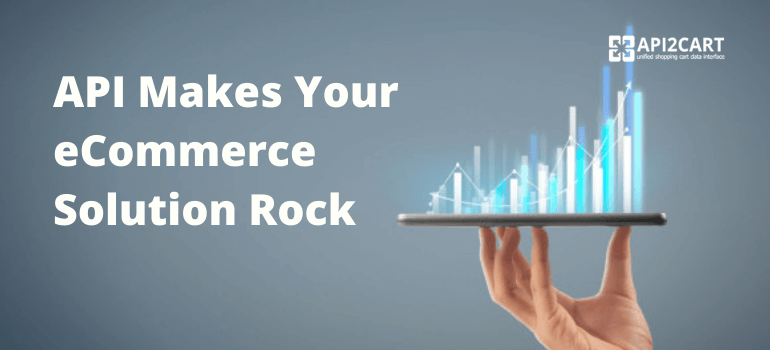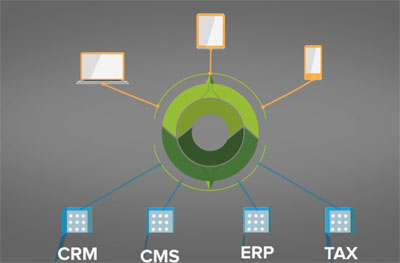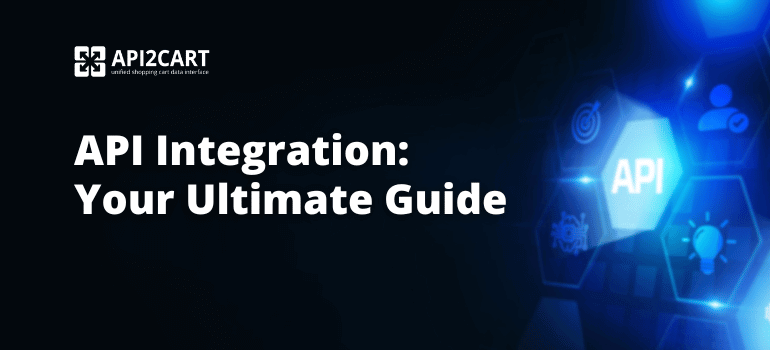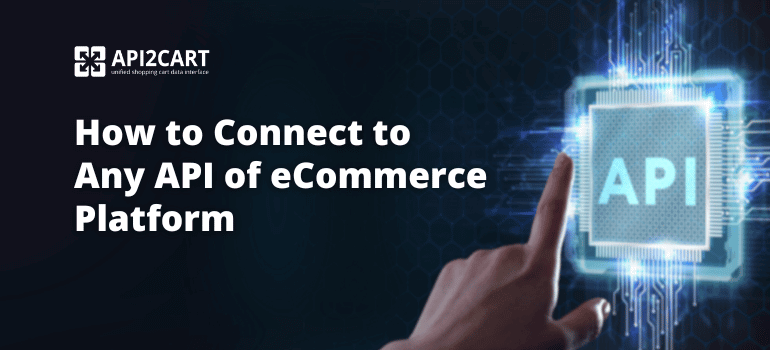
Business-to-business way of profit-making is extremely widespread currently. However, it’s not enough to be just professionals in the sphere. The harsh competition requires to be innovative in order to fulfill customer’s most spontaneous desires and wishes. So, merchants who want to reach world markets are now beginning to realize that the usage of Application Programming Interface is crucial in conducting e-business.
But in most cases, this term sounds quite challenging for non-technical vendors. So, what is covered behind this complex technology and how it can affect on your online business? Read this article and find out more how eCommerce APIs drive digital experience.
As businesses re-architect their systems to extend their brand to emerging touchpoints, harness the power of Big Data and all other aspects of the Digital Experience the importance of an API strategy cannot be underestimated. In fact, your marketing platform depends on it.
What exactly is an API?
Think of Application Programming Interfaces (APIs) as similar in purpose to the human-machine interfaces we use to interact with software everyday – but between two systems or applications. The most simplistic way of describing this is that one database has a female socket and the other, a male plug. The integration process is to bring these two (APIs) together to establish a connection through which data (electricity) can flow.
This plug analogy only goes so far and software architects know that in reality there are multiple pieces that need to be joined between systems. The integration process itself is often complex as it requires mapping between “syntaxes.” An example here would be how in English we say “the blue car” but in French, the proper syntax would be “the car blue.” So as you begin to map the relationship between two languages (or two databases) it becomes programmatically more complex.
What do they do?
APIs connect your back-end systems and make data digestible for your front-end systems. If designed correctly, your APIs will play a major role in creating new business models and products and increase your network effect by allowing external developers to leverage your most valued assets in a straightforward and consistent way.
Understanding the API Economy
APIs can be either public – projecting your data and capabilities to the outside world – or private – simplifying access to those designated within your company or trusted partners. Last year, external-facing APIs were a faint blip on the horizon, but now ProgrammableWeb lists over 9,000 APIs just waiting to be tapped. No doubt that number will grow exponentially as new data points and databases emerge. And for every public API, there are approximately ten more private ones shuttling enterprise data within their companies and partner ecosystems.
To better understand the relationship between APIs and the emerging API economy, an example would be a coffee company whose app has purchasing functionalities but doesn’t yet identify the nearest store to a customer’s present location.
A developer (internal or external) could establish connections between the Google Maps API, the coffee company’s store list (via another API) and a customer’s geolocation (via their cellphone data) to give that consumer the ability to instantly direct themselves to the most convenient location of their favorite brand of coffee.
The coffee company benefits as this new functionality helps maintain the customer’s brand loyalty. The App developer, if external, benefits via in-app revenue streams (such as advertising) or reselling the data that is generated.
Categories of APIs
Unfettered creativity and rapid innovation promised by APIs isn’t based on how fast data can flow from one system to the other but how fast you can build and integrate “plugs” from different data sources.
In terms of different flavors of APIs, SOAP (Simple Object Access Protocol) is an older, legacy architecture that was originally engineered to link related applications together at a fairly low level. Its design requires a deep dive into the component systems and the underlying resources that make up its data and capabilities. As such, it is stable and dependable, but complicated to work with.
REST (Representational State Transfer) Level One and Two are varieties of a more advanced and refined model that attempts to abstract the underlying systems so that API developers do not have to dive as deeply into them. REST Level 3 is an emerging and advanced architecture that is especially applicable for the API economy, emerging touchpoints, and the Internet of Things – because it's freshly architected with these things in mind, rather than adapted from an old paradigm.
API Toolkits
API toolkits are also important in that they aid developers in the integration, security, permissions, development, maintenance and efficiency of the API. For example, tools that link data for delivery when an API call is made will, in part, determine the load that your systems can bear. For example, Twitter recently received a record-breaking 145,000 API calls per second. If each call had to return 3 separate pieces of data in 3 separate calls rather than one call of grouped data, systems might crash.
Unified API Strategy
To create a seamless digital experience, a unified API strategy is recommended. Rather than each database directly connecting to other databases and touchpoints, a unified touchpoint broker or mediation layer becomes a central point of contact.
Example of a traditional hardwired system:

A unified API connects all backend systems allowing digestible data to flow out to touchpoints:

A unified API architecture has several benefits:
- Data flows into one central spot – both from backend systems and external, customer-facing touchpoints. This has ramifications for processing data in real time.
- Promotes ease of swapping out backend systems
- Fast creation of new products/campaigns/offers/programs. Systems don’t have to be pre-wired together.
- Provides data digestible to new touchpoints such as Tablets and Mobile
Hope that this article helps to understand Application Programming Interface better. In case you provide inventory, mobile commerce, shipping, data feed or other type of services, integration with various shopping carts using API will bring a lot of competitive advantages. Easily gather all needed data from the client’s stores and process it within your system to provide customers with the best experience.
However, establishing connection with shopping carts requires strong technical expertise as each platform has its unique way of data storage. Thus, designing multiple integration modules will cost you both time and money constraints.
API2Cart provides you with a unified API to access more than 40+ shopping platforms simultaneously. Retrieve, add, update, delete and sync data, including products, customers, orders and other related info in no time. Connect with such industry leaders like Magento, WooCommerce, BigCommerce, Shopify, PrestaShop and others.
If there are some questions to ask or some issues to solve, schedule a FREE Consultation and our expert will help you! Stay competitive with API technology and API2Cart.



